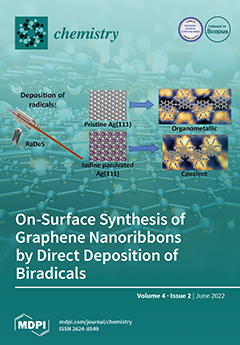Lithium oligo-α-pyridylamides are useful intermediates in coordination chemistry. Upon
trans-
metalation they have afforded a variety of extended metal atom chains (EMACs), which are currently investigated as molecular wires and single-molecule magnets. However, structural information on this class of compounds is scarce.
[...] Read more.
Lithium oligo-α-pyridylamides are useful intermediates in coordination chemistry. Upon
trans-
metalation they have afforded a variety of extended metal atom chains (EMACs), which are currently investigated as molecular wires and single-molecule magnets. However, structural information on this class of compounds is scarce. Two trilithium salts of a new, sterically encumbered oligo-α-pyridylamido ligand were isolated in crystalline form and structurally characterized in the solid state and in solution. Lithiation of
N2-(trimethylsilyl)-
N6-{6-[(trimethylsilyl)amino]pyridin-2-yl}pyridine-2,6-diamine (H
3L) with
n-BuLi in thf yielded dimeric adduct [Li
6L
2(thf)
6] (
1), which was crystallized from
n-hexane/thf as
1·C
6H
14. Crystals of a tetra-thf solvate with formula [Li
6L
2(thf)
4] (
2) were also obtained. The compounds feature two twisted L
3− ligands exhibiting a
cis-
cis conformation and whose five nitrogen donors are all engaged in metal coordination. The six Li
+ ions per molecule display coordination numbers ranging from 3 to 5. Compound
1·C
6H
14 was investigated by multinuclear 1D and 2D NMR spectroscopy, including
1H DOSY experiments, which indicated retention of the dimeric structure in benzene-
d6 solution. To the best of our knowledge,
1 and
2 are the longest-chain lithium oligo-α-pyridylamides structurally authenticated so far, thereby qualifying as appealing intermediates to access high-nuclearity EMACs by
trans-metalation.
Full article





